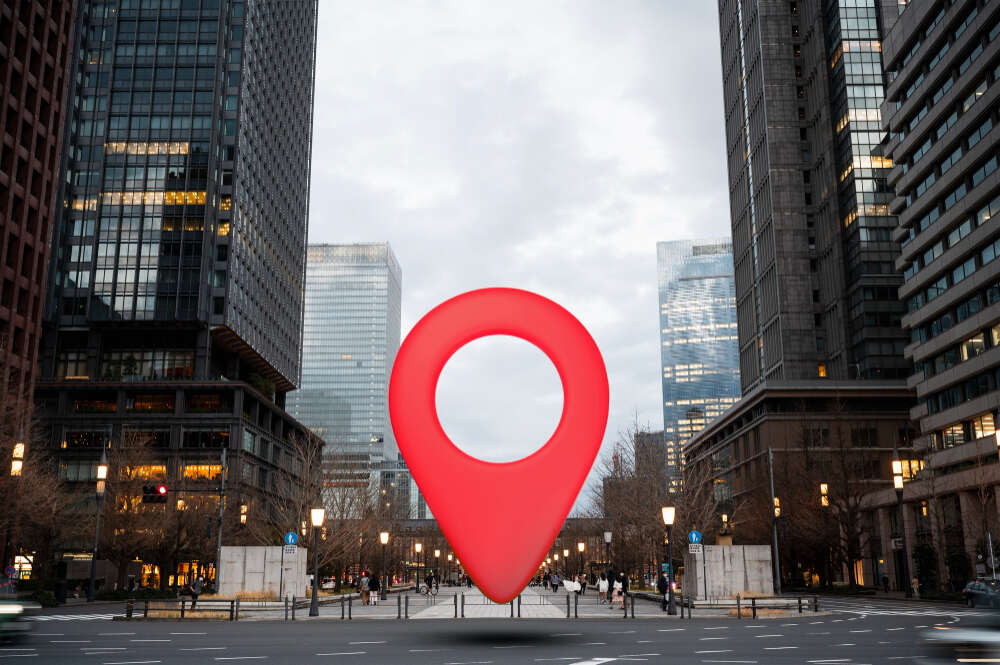
Local SEO has never been more important for businesses hoping to dominate their local marketplaces. Local searches are getting more customized and competitive as search engines continue to refine their algorithms. According to current data, 78% of local mobile searches result in an offline purchase; and 46% of searches in Google have local intent, making local SEO an essential tactic for companies looking to reach nearby clients.
However, staying ahead in local search results requires more than just advertising your business online. With rapid advancements in digital marketing, strategies like optimizing Google Business Profiles and hyper-local targeting have become essential. For businesses aiming to increase localized traffic, generate leads, and enhance brand visibility, adapting to these changes is crucial.
Here’s a complete guide on how local SEO works and how to implement proven strategies for maximum impact.
Table of Contents
What Is Local SEO and Why Is It Important

Local SEO focuses on making a company’s online presence more visible in location-based searches. Whether someone searches for “best coffee shop near me” or “dentist in New York,” companies that have optimized for local intent are more likely to appear in Google’s Local Pack and organic search results. Investing in local SEO services benefits businesses that rely on foot traffic or local consumers by increasing online exposure, engagement, and conversions.
How to Stay Ahead with Key Local Ranking Factors

Local SEO utilizes a range of strategic tactics aimed at strengthening Google’s recognition of your business as relevant, credible, and authoritative in local searches.
When it comes to prioritizing local search results, Google employs a separate set of ranking factors, including:
- The Searcher’s Current Location
- NAP (Name, Address, Phone Number) Citations
- Google Business Profile Listing Presence and Optimization
- Local Keyword Targeting
- Online Reviews (Keywords and Overall Feeling)
- Google Maps Star Ratings
- Quality of Local Backlinks
- Total Number of “Check-ins” at That Location
- Social Media Shares
Furthermore, Google rates local businesses in Google Maps and the Local Pack using these variables:
- Relevance: How well your business matches a search query
- Distance: How close your business is to the searcher’s location
- Prominence: How significant Google considers your company to be in respect to the user.
Understanding How Google’s Local Pack Functions

Optimizing for the Google Local Pack (or “The Map Pack”) should be a top priority for businesses looking to enhance local engagement, drive traffic, and increase conversions.
The Local Pack is the top section of search results featuring local businesses relevant to a query. This is a set of three local business listings displayed alongside a Google Maps preview. Each listing includes essential details such as the business name, address, phone number (NAP), and Google star rating, along with a map showing their exact locations, providing users with quick and vital information at a glance.
Google’s Local Pack displays a map along with nearby business listings that best match a user’s search intent. Businesses should recognize that the majority of local searches are driven by high commercial intent.
Here’s an overview of how Google’s Local Pack works:
- Claim or create your Google Business Profile
- Verify your Google Business Profile so it can be found on Google Maps
- Optimize for local keywords
- Add your NAP citations to social media profiles and business directories
- Collect Google Reviews from customers
- Build local backlinks from reputable local websites
- Add photos and update them regularly
- Post regularly on your Google Business Profile
- Respond to all reviews (both positive and negative)
- Monitor your local SEO performance
The Significance of the Google Local Pack for Local Businesses

The Google Local Pack plays a critical role in local search visibility, placing businesses front and center in relevant search results. Here’s why it’s a game-changer for local businesses:
Increases Online Visibility
The Local Pack appears at the top of search results, giving businesses prominent visibility in front of potential customers. Since Google prioritizes this section, ranking here significantly boosts a business’s online exposure, often above traditional organic results.
Provides a Good User Experience
The Local Pack’s organized format allows customers to quickly access vital company facts. Information such as contact numbers, business hours, customer reviews, and directions is immediately accessible, improving user experience and helping searchers make quick decisions.
Encourages Users to Take Action
The Local Pack streamlines the process of interacting with companies from search results by including built-in calls to action (CTAs). Customers are more likely to make a purchase right away because of this feature’s simplification of interactions.
Attracts Foot Traffic
The number of customers that visit brick-and-mortar stores is strongly related to their position in the Local Pack. Being visible in these results can bring customers to your physical site, since many mobile searches are done with a local purpose.
Builds Credibility and Trust
The Local Pack clearly displays consumer evaluations and ratings, making it an effective tool for building credibility. Businesses with high ratings and positive feedback are more likely to attract new customers. Maintaining a solid reputation through online reviews may have a direct impact on purchase decisions.
Competitive Advantage
Securing a spot in the Google Local Pack provides you a significant edge over competitors who are not featured, especially in regions where local visibility influences purchasing decisions. This is especially valuable for product-based firms, since purchasers commonly utilize local search results to compare options before making a purchase.
How to Optimize Your Google Business Profile

A Google Business Profile (GBP) is one of the most powerful tools for local businesses. Proper optimization includes:
- Add your Business Profile
- Add relevant information and complete all business details accurately
- Be consistent with name and address
- Use a local phone number
- Keep your hours updated
- Selecting the right business categories
- Properly describe and categorize your business
- Adding high-quality images and videos
- Using Q&A features to engage potential customers
- Add social media links in Google Business Profile
- Encouraging customer reviews and responding promptly
- Posting regular updates and offers
Conduct Local Keyword Research
Local keywords are the search phrases that individuals in a certain region use to find products, services, or information. Targeting these region-specific phrases makes your content more relevant to surrounding audiences, increasing the likelihood of it appearing in local search results and attracting prospective consumers in your area.
The primary distinction between general and local keyword research lies in keyword structure, as local keywords incorporate location-specific terms. That is why you should always emphasize terms with local meaning, such as “best vegan restaurant in Belgrade” OR “professional house cleaning services near me”.
Understanding what potential customers are looking for online helps you to boost your company’s visibility among the most relevant audience—local buyers.
Finding the right local keywords include these steps:
- Brainstorm seed keywords
- Leverage keyword research tools, such as:
- Google’s Keyword Planner for location-specific terms
- Semrush’s Keyword Magic Tool for in-depth analysis of specific keyword details
- Research your competitors
- Structure local keywords effectively
- Leverage Google Autocomplete to confirm and refine your keyword ideas
- Checking Google’s “People Also Ask” section
- Determine local search volumes and keyword relevance
- Leveraging geo-modifiers (city names, neighborhoods, and “near me” searches)
- Utilize keyword mapping by strategically assigning target keywords to specific pages
Incorporating local keywords naturally into your website, blog content, and metadata improves exposure. Also, ensuring that location-based keywords appear above the fold (in headlines, meta titles, and first paragraphs) helps boost local search ranks and click-throughs.
When conducting keyword research, prioritize those with explicit local intent, such as “bakery in Lisbon”, which directly includes a location. However, don’t overlook implicit local intent, where users simply search for “bakeries” while physically being in the area. To maximize visibility, ensure your business ranks for both types of local searches.
Also remember, if a keyword aligns with what your audience is likely to search for, it’s worth targeting—even if SEO tools indicate a low search volume.
Refine Your On-Page SEO for Local Businesses

Enhance your local presence by incorporating key on-site SEO strategies that have proven to be the most effective:
- On-page features like title tags, meta descriptions, headers, and internal links should be optimized to improve local search ranks and user engagement.
- Include geographical keywords into title tags and meta descriptions to boost click-through rates (CTR) and search ranks.
- For businesses with several locations, building dedicated landing pages with distinct, location-specific content boosts search visibility. This implies that each landing page should have location-specific keywords in the primary headline, subheadings, body content, and meta tags.
- Using structured data markup (LocalBusiness Schema) allows search engines to better interpret and index your company information.
- Including a Google Map on your website’s about or contact pages improves both user experience and local SEO results. It informs search engines that your business has a physical location, making it simpler for users to locate you.
Build NAP Citations and Business Listings
Your business is more likely to appear in local search results if its information appears in many trustworthy sources. These online mentions are known as citations in local business listings and other directories. Being featured in high-authority directories like Yelp, Bing Places, Apple Maps, and industry-specific platforms boosts trust and internet exposure.
Consistency in NAP citations (Name, Address, and Phone Number) across web directories is crucial for local SEO rankings. Google cross-references this information from several sources to ensure a company’s validity. Any discrepancies, such as various locations, phone numbers, or name changes, might mislead search engines and result in lower ranks. Regularly inspecting and updating your listings will help to preserve accuracy and avoid ranking difficulties.
The Impact of Google Reviews: How to Encourage and Engage with Customer Feedback

Review signals continue to be a key factor in local search rankings. High-quality evaluations help businesses rank better in Google’s Local Pack. That is why businesses should encourage pleased customers to post reviews since a larger number of reviews, along with excellent ratings, improves exposure and increases the likelihood of ranking higher in local search results.
Negative evaluations on your Google Business Profile (GBP) can undermine your company’s credibility, making reputation management critical. Addressing negative criticism properly not only helps to limit possible damage, but it also boosts your local SEO efforts.
Reviews also serve as social evidence, demonstrating consumer trust, and actively reacting to them—both good and negative—showcases involvement and dedication to customer pleasure. Responding to comments swiftly helps to retain a positive reputation and increase credibility in local search results.
Businesses may monitor and reply to reviews using technologies such as Google Alerts, Trustpilot, and ReviewTrackers, allowing them to preserve their favorable reputation.
Implement Local SEO Link-Building Strategies
Earning local backlinks is a vital element of local SEO performance. A company’s online exposure and search engine rankings can be greatly improved with the acquisition of relevant, high-quality local connections. Backlinks from relevant, high-authority local sources indicate to Google that your company is credible and well-established in the town.
Here are some samples of what you can accomplish.
Sponsor Local Events
Sponsoring local events is an excellent way to gain backlinks from event pages, community websites, and press coverage. Many event organizers list their sponsors on their websites, providing a valuable local backlink while increasing brand visibility in the community.
Local PR
Getting recognized in local news outlets, online magazines, and company directories may help you build strong backlinks and create a reputation. Submitting press releases regarding business milestones, product launches, or community involvement can enhance your chances of receiving earned media coverage from trusted local outlets.
Local Influencers
By forming partnerships with local bloggers and influencers, businesses have the opportunity to increase the number of organic backlinks they receive through genuine recommendations and reviews.
Participate in Your Local Community
Active participation in the community, whether through contributions to local forums, collaboration with neighboring companies, or charity efforts, can result in natural link-building possibilities that improve local search rankings.
How to Monitor Your Local SEO Results

Tracking local SEO performance is essential for determining what works and where adjustments are required.
Businesses could begin by monitoring Google Business Profile (GBP) Insights, which collects information on consumer activities, search queries, and map interactions. This aids in identifying patterns in how users discover and interact with the company.
Furthermore, employing tools such as Google Search Console and Google Analytics may give more information on organic search performance, website traffic, and keyword rankings. Regularly examining these analytics allows companies to alter their tactics to reflect search trends and user behavior.
Monitoring local ranks with tools such as Semrush Position Tracking enables businesses to measure their search exposure for specific keywords in specific places. It’s also critical to monitor NAP consistency among company directories, as conflicting data might harm search rankings.
Finally, businesses should monitor and evaluate client feedback and internet remarks. Reviews on sites like Google, Yelp, and industry-specific directories affect results while also providing insights into customer opinion.
Latest Digital Marketing Trends in Local SEO

Local SEO is continuously developing, with emerging trends influencing how businesses attract and engage local customers. Staying on top of these developments is critical for maintaining high search visibility and a competitive advantage.
Below are some of the most influential local SEO trends that are set to reshape how businesses approach local search optimization and digital marketing strategies.
Voice Search Optimization
Voice Search Optimization is tailoring content for conversational queries and long-tail local keywords frequently used in voice searches. Businesses looking to stay ahead in local SEO should integrate these keywords into their voice search strategy to enhance visibility, attract new potential customers in the area, and dominate local search results.
Mobile-First Indexing
Mobile-First Indexing means ensuring fast loading times, and mobile-first indexing enhances user experience and ranks in local search results. This requires implementing responsive design to ensure a seamless, user-friendly experience across all devices, maintaining consistency in functionality and appearance.
User-Generated Content (UGC)
User-generated content (encouraging customer photos, testimonials, and community engagement) boosts credibility and trust for local businesses, playing a crucial role in consumer decision-making. Potential customers often rely on testimonials, reviews, and ratings to determine whether to engage with a business, making UGC a powerful influence on their choices.
AI in Local SEO
By leveraging AI technology, businesses strive to deliver more personalized and refined search experiences, which in turn shapes the way they optimize their local SEO strategy for greater visibility and engagement. In the future, AI-driven insights will play a larger role in keyword research, competitor analysis, personalized marketing campaigns, automation (such as automated review responses), and content creation.
Hyper-Local Targeting
Hyperlocal targeting focuses on delivering highly specific and relevant content to consumers based on their exact location. This strategy hones in on micro-locations—such as individual neighborhoods or districts—to create more personalized marketing experiences. By leveraging location-based data and local insights, businesses can craft messages that resonate with nearby audiences, increasing engagement and conversion rates.
Providing Locally Relevant Content
Localized online content involves crafting messages tailored to the interests and needs of local consumers. Creating region-specific content—such as city guides, event roundups, and community news—is essential for businesses looking to attract highly targeted local search traffic and strengthen their connection with nearby audiences.
Expansion of Visual Search
Visual search, which allows users to search using images, is becoming increasingly integrated into websites and apps, making it essential for local businesses to understand how Google interprets and processes visual content. As this technology advances, optimizing images and videos for Google Lens and visual search will be crucial for local businesses looking to enhance their visibility and attract more customers through image-based search queries.
Wrapping Up
Businesses need to be proactive, smart, and flexible to keep up with the ever-changing landscape of local SEO. Brands that are open to change and innovation will be the ones to succeed as search engines are always improving their algorithms.
Real people discovering and selecting your business is the essence of local SEO. So the key is to connect with people who are really looking for what you have to give and build relationships with them. Every action you do, like providing accurate listings, creating high-quality localized content, and encouraging customer feedback, adds to your exposure and reputation.
Stay patient; search engine optimization is a long haul. Beyond keeping up with the latest digital marketing trends in local SEO, establishing a strong local presence requires consistent effort, strategic optimization, and ongoing refinement. While results may not be immediate, the long-term benefits make the investment worthwhile. Partnering with an experienced digital marketing agency can help businesses navigate complex search algorithms and attract high-intent local customers more effectively.
But what really differentiates you in the local search game is the value you give to your clients. So, keep monitoring, keep optimizing, and most importantly, keep delivering value.

